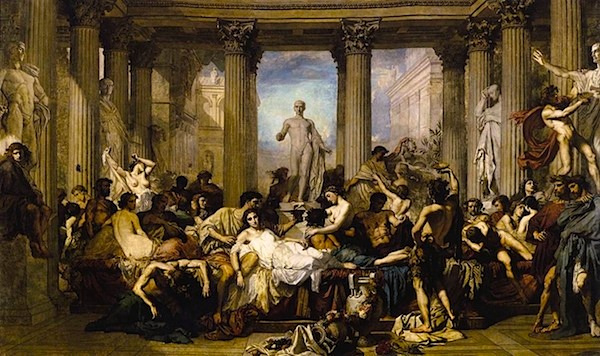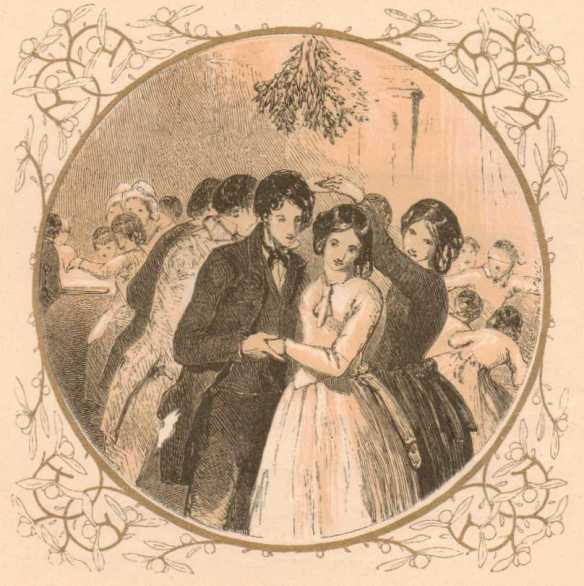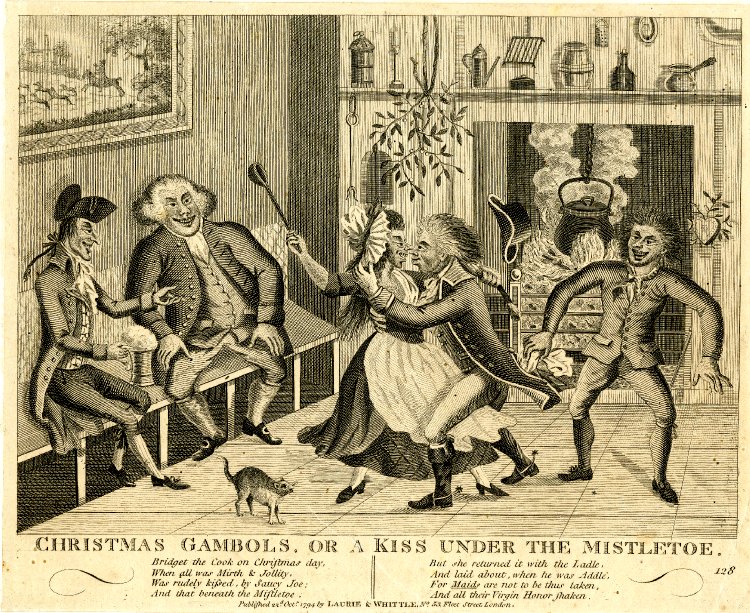The symbolic Christmas time herb, mistletoe, always makes an appearance over the festive period. From mistletoe ornaments, to hanging decorations, to selfies under the mistletoe, it is a tradition that has lasted for centuries. Whilst we all know the custom of kissing under the mistletoe, do we know the history behind it? Let’s have a look…
The romantic connotations of mistletoes date back to the Celtic Druids of the 1st century A.D. Celtic Druids lived on the British Isles, what is now Ireland and Scotland. They believed that because mistletoe could blossom even during the harsh winters, it was a symbol of vivacity and so they linked it to restoring fertility. There were no links to kissing under the mistletoe at this time and neither was it linked to the Christian holiday of Christmas. Druids would collect it during the summer and winter solstices and would use it in a ritual or in medicine. This was called the Ritual of Oak and Medicine. They would climb a sacred oak, cut down the mistletoe and sacrifice two white bulls and use it to cure infertility. They considered the oak to be male and mistletoe found growing on it, female, so conveying a message of fertility.

The notion of the healing properties of mistletoe carried on with the Ancient Greeks as they used it as a cure for everything from menstrual cramps to spleen disorders. In 50 C.E, the Greek physician, Dioscorides, wrote in his Materia Medica, that he found mistletoe helped to cure his patients of external tumours.

Kissing under the mistletoe may have begun with the Greek Kronia agricultural festival and its Roman successor, Saturnalia. Saturnalia was the pagan Roman winter solstice festival which lasted for a week. This festival honoured the god of agriculture, Saturn, and so fertility rituals took place under mistletoe which explains where the tradition of kissing under the mistletoe comes from.

Kissing under mistletoe also appeared in Norse mythology as a symbol of love and peace. This North myth was told in Iceland’s 13thcentury Prose Edda. The story goes that the goddess, Frigg, lost her son, the god Baldr, to an arrow carved of mistletoe. In some versions of the story he is brought back to life but most agree that Frigg’s tears became the pearl berries of mistletoe and she decreed that instead of being punished, mistletoe should become a symbol of peace and friendship. In the Roman era, enemies at war would reconcile differences under mistletoe as a symbol of peace.

The associations of mistletoe with fertility continued throughout the Middle Ages and by the 18thcentury it was incorporated into Christmas celebrations and widely used as a Christmas decoration. One of the earliest records to date of the mentioning of kissing under mistletoe is in the musical Two to One (1784) where the lyrics of a song went: “Cry, ‘What good-luck has sent ye?’ And kiss beneath the mistletoe, The girl not turned of twenty.”

It is said that the kissing tradition caught on among servants in England before spreading to the upper classes where it then became very popular. There was kissing under the mistletoe in the illustration book version of ‘A Christmas Carol’ published in 1843.

In Victorian England, they took kissing under the mistletoe very seriously. If a girl refused a kiss she was expected to have no marriage proposals for at least the next year. Also, men were allowed to steal a kiss from any woman caught standing under the mistletoe and to refuse was bad luck. The original custom was that a berry was picked from the sprig of mistletoe before the person could be kissed and once all the berries had gone there could be no more kissing.


Whilst mistletoe is linked with romance and fertility, the translation of what the word means is not so attractive. The name mistletoe comes from two Anglo Saxon words ‘Mistel’ which means dung and ‘Tan’ which means twig or stick, meaning it translates ‘dung on a stick’. This makes sense as Anglo-Saxons noticed that mistletoe often grows where birds leave droppings. Mistletoe is also a parasitic plant.
What a lovely plant to be the symbol of love.

[…] Christmas collection: What is the history behind why we kiss under mistletoe at Christmas? […]
LikeLike